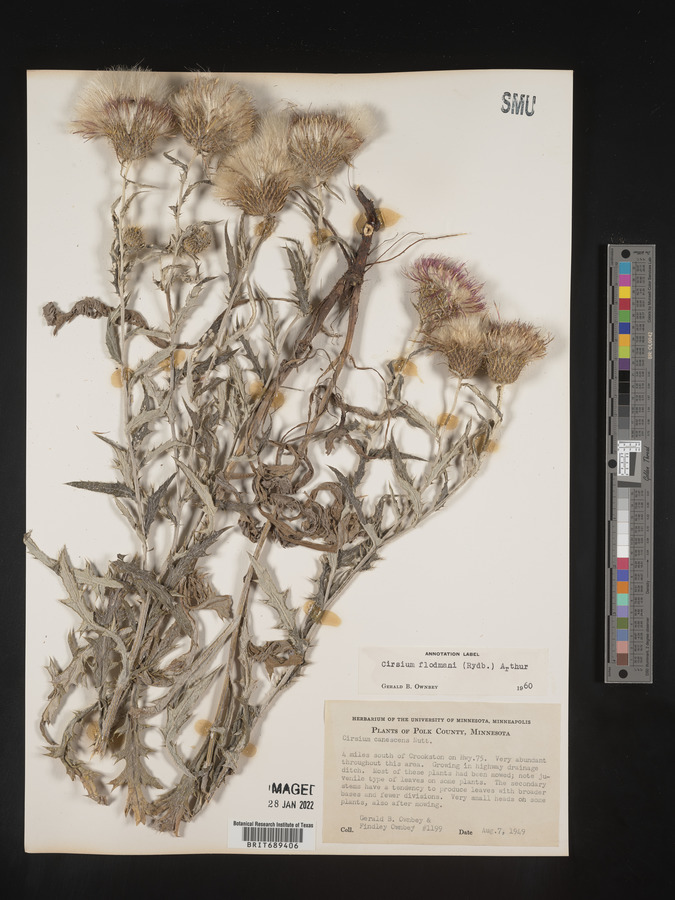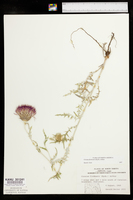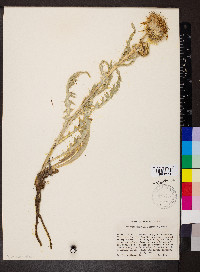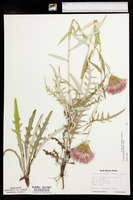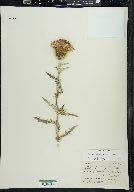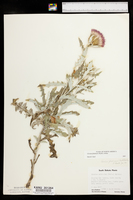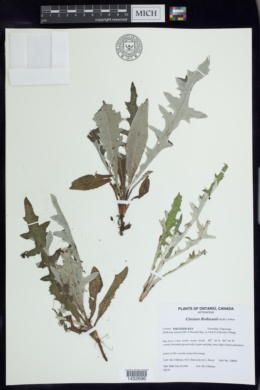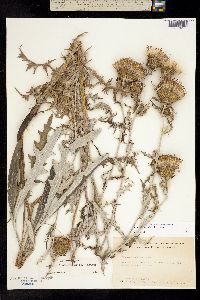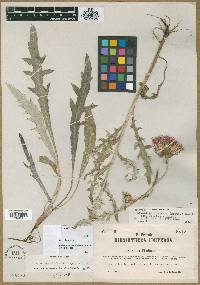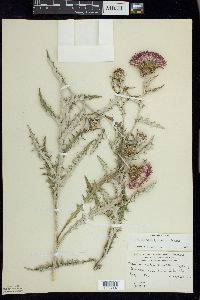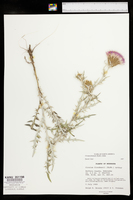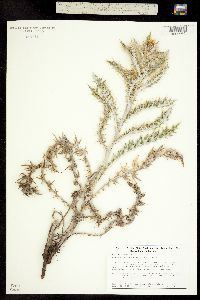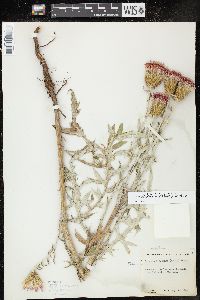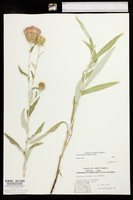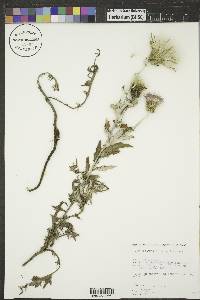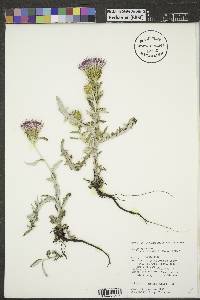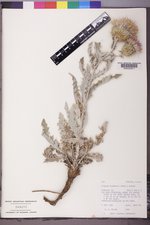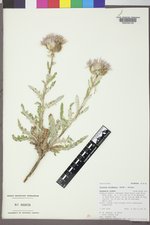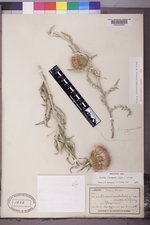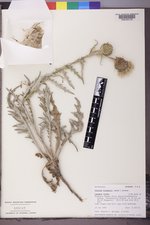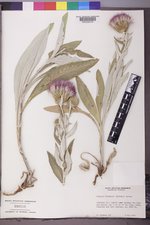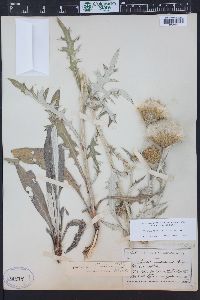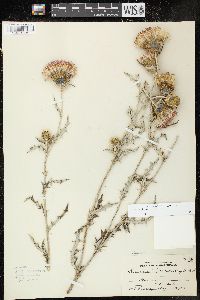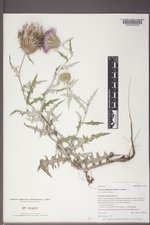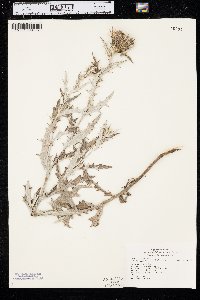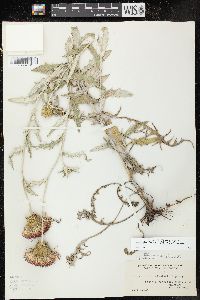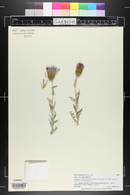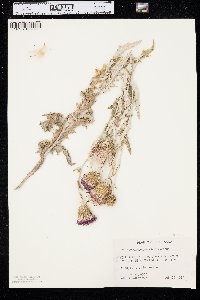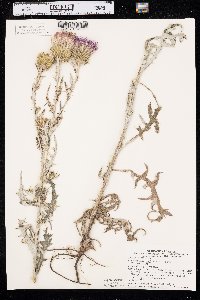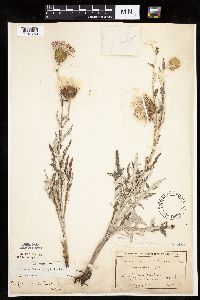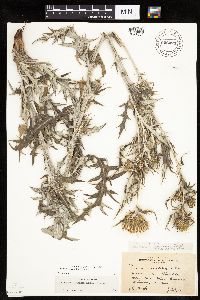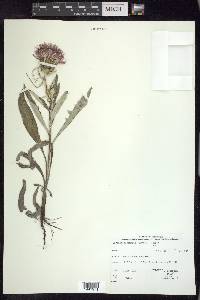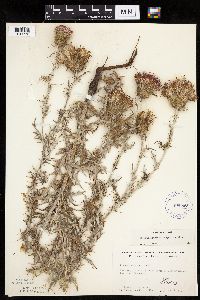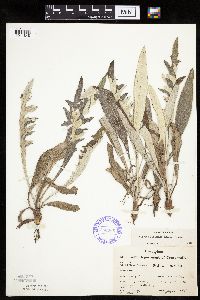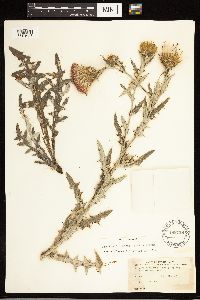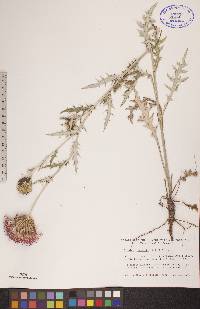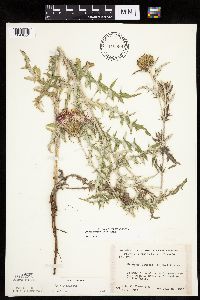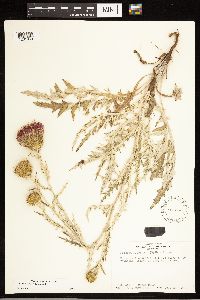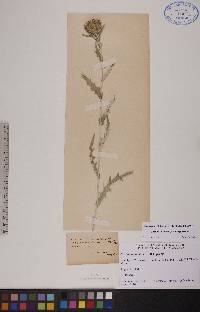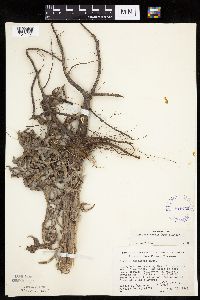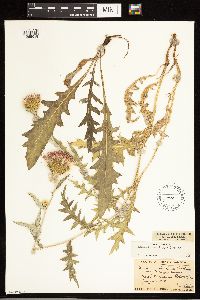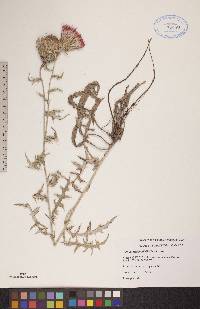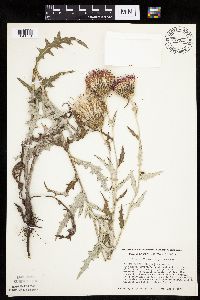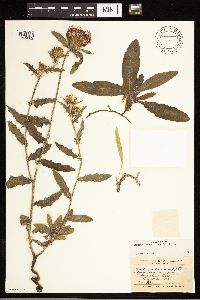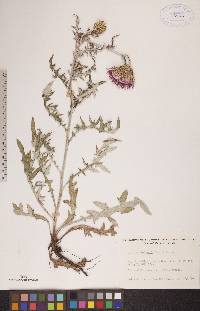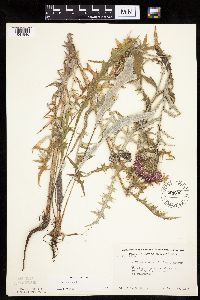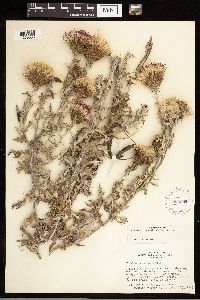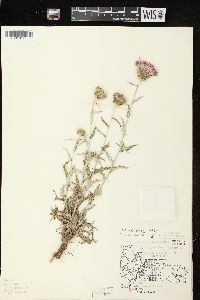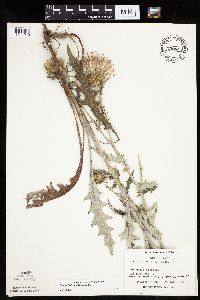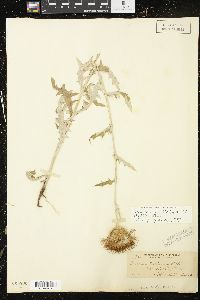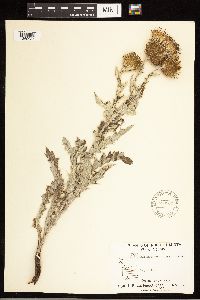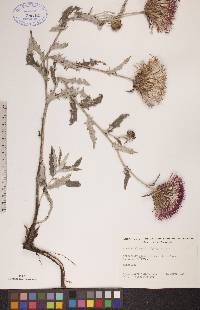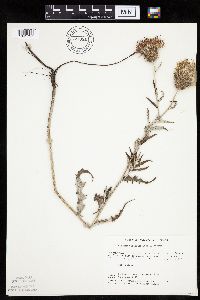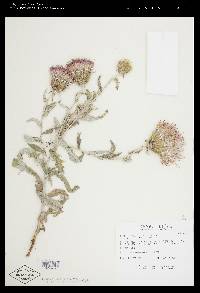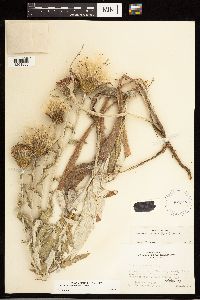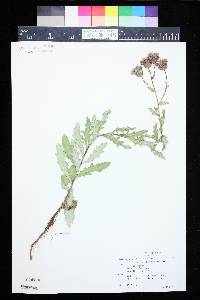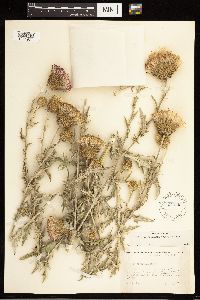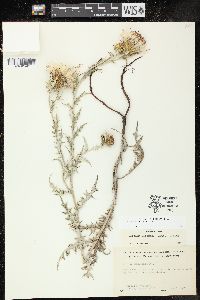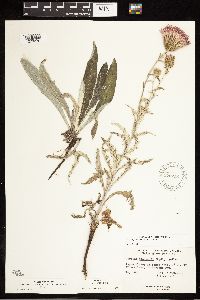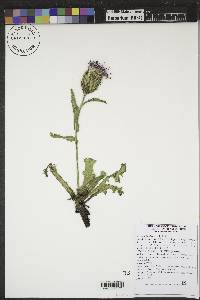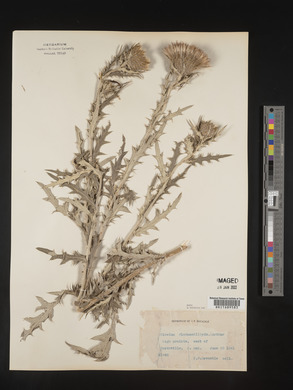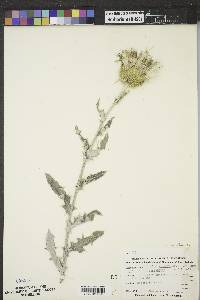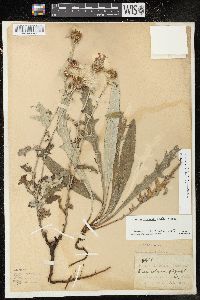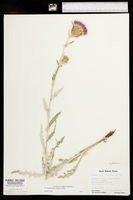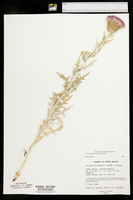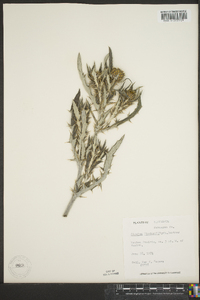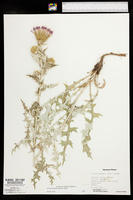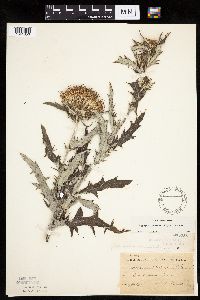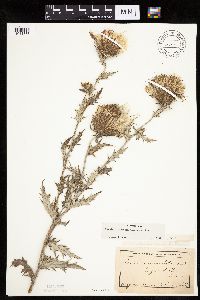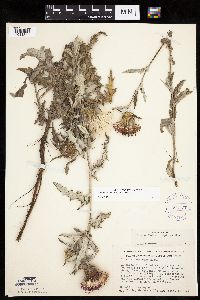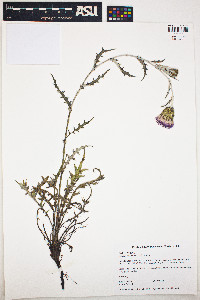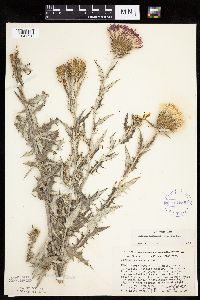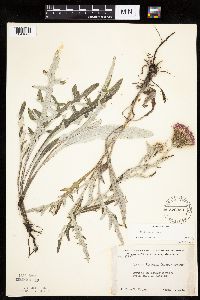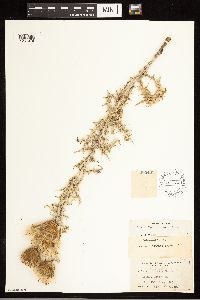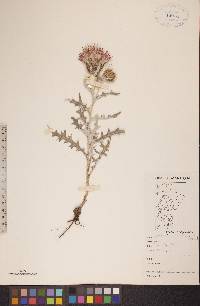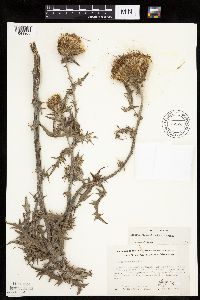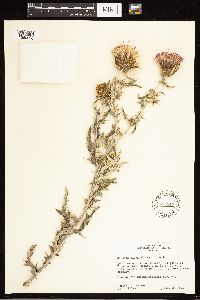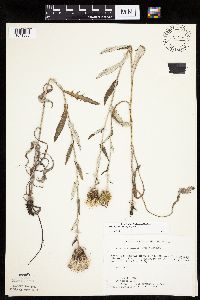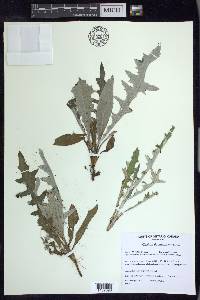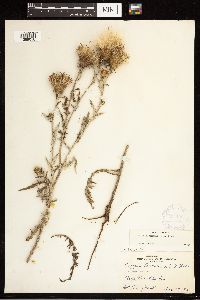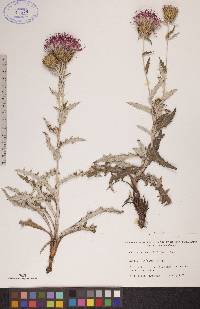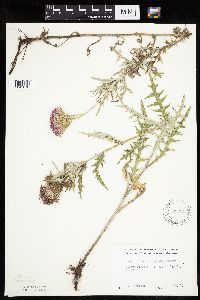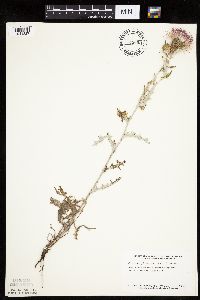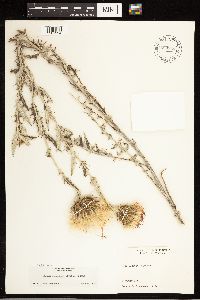Cirsium flodmanii
|
|
|
|
Family: Asteraceae
Flodman's Thistle, more...Flodman thistle
[Carduus flodmanii, moreCirsium nebraskense var. discissum Lunell, Cirsium oblanceolatum (Rydb.) K. Schum.] |
Perennials 30-140 cm; horizontal runner roots that produce root sprouts. Stems 1-several, erect, gray. or white-tomentose; branches 0-few, ascending. Leaves: blades oblong-oblanceolate to narrowly elliptic, 4-40 × 1-10 cm, bases usually not decurrent, finely spiny-toothed and undivided to coarsely toothed or deeply pinnatifid, lobes broadly triangular to linear-lanceolate, often revolute-margined, main spines 1-7 mm, abaxial faces white-tomentose, adaxial faces green, thinly tomentose, ± glabrate; basal usually absent or withered at flowering, winged petiolate; principal cauline proximally winged-petiolate, distally sessile, well distributed, gradually reduced, bases usually not decurrent; distal cauline well developed. Heads erect, borne singly and terminal on main stem and branches, or few in corymbiform arrays from distal axils (not subtended by ring of spiny-margined bracts ). Peduncles 0-5 cm (elevated above distal leaves). Involucres ovoid to broadly campanulate, 2-3.5 × 2.5-3.5 cm, thinly arachnoid. Phyllaries in 7-12 series, strongly imbricate, greenish with subapical darker central zone, ovate or lanceolate (outer) to linear (inner), abaxial faces with prominent glutinous ridge; outer and middle entire, bodies appressed, entire, acute, spines abruptly spreading, slender, 2-4 mm; apices of inner spreading, flexuous, narrow, flattened, finely serrulate, ± scabrous. Corollas purple (white), 23-36 mm, tubes 12-15 mm, throats 6-8.5 mm, lobes 5-9 mm; style tips 4-7 mm. Cypselae light brown, 3-5 mm, apical collars stramineous, 0.5-1 mm; pappi (white or tawny. 20-30 mm. 2n = 22, 24. Flowering summer (Jun-Sep). Tallgrass, mixedgrass, shortgrass prairies. meadows, pastures, often in damp soil; 100-2400 m; Alta., Man., Ont., Que., Sask.; Colo., Ill., Iowa, Kans., Mich., Minn., Mont., Nebr., N.Dak., S.Dak., Wis., Wyo. Cirsium flodmanii ranges from Saskatchewan and Alberta south through the northern Great Plains and intermountain valleys of Montana and Wyoming to northeastern Colorado and east through the prairies to Minnesota and Iowa, and in widely scattered locations eastward to northern Illinois, southern Wisconsin, southern Ontario, and southern Quebec. It is known to hybridize with C. muticum and C. undulatum. Hybrids between C. flodmanii and C. undulatum are highly sterile with numerous meiotic irregularities (S. Dabydeen 1987).
Resembling no. 10 [Cirsium undulatum (Nutt.) Spreng.], but smaller and more delicate, 3-8 dm, and vigorously spreading by short-lived creeping roots, the individual plants thus established generally becoming taprooted; lvs usually rather deeply pinnatifid, the lobes commonly lance-triangular and seldom over 7 mm wide, or sometimes fully as wide as those of no. 10, varying to subentire and merely spiny-margined (especially the basal ones); heads merely rounded (not invaginated) at the base, and avg smaller, the invol 2-2.5(-3) cm, its bracts appearing darker, narrower, more numerous, and more closely imbricate, their spine-tips sometimes under 3 mm; fls rich purple (white); achenes 3-5 mm, with a conspicuous apical yellow band; 2n=22. Swales and other moderately moist, poorly drained sites on the Great Plains, extending e. to Man., Minn., and Io., and occasionally intr. eastward. June-Sept. (C. canescens, misapplied) Gleason, Henry A. & Cronquist, Arthur J. 1991. Manual of vascular plants of northeastern United States and adjacent Canada. lxxv + 910 pp. ©The New York Botanical Garden. All rights reserved. Used by permission. |

